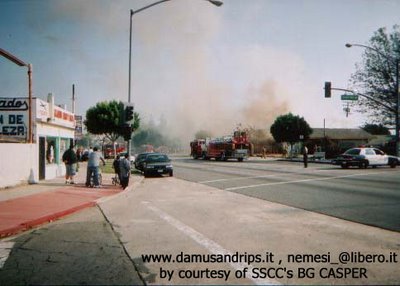

His advice to public employees in other struggling cities: “Be ready to make significant sacrifices to avoid bankruptcy.”ĭuring the restructuring, Vallejo escaped at least $32 million in debt, paying some creditors as little as 5 cents on the dollar. “We had a false sense of what was sustainable and what wasn’t,” he said. Matt Fenzl, spokesman for the Vallejo firefighters union, likened the employees’ mentality to a child who is given ice cream every evening and then suddenly told the treat is unhealthy. Some city workers were unprepared for how bad things would be during the restructuring and now wish they had done more to avoid it. “In order to avoid bankruptcy, you need to not have leveraged yourself so much that you have lost control of your destiny and you need a trusting relationship between the bankers, suppliers, vendors, employee organizations,” he said. Philip Batchelor, interim city manager during the bankruptcy, said Vallejo fell off a financial cliff for two prosaic reasons. “You go through a bankruptcy, you lose half your staff, do you really run out to your engine?” said Meyer, whose offices sit above of one the city’s shuttered stations.

Vallejo Fire Chief Paige Meyer acknowledges his firefighters were in a funk. Road maintenance in the city was cut by 90 percent, staffing at the police and fire departments were nearly halved, and grants for arts and recreation programs were eliminated. Initially after bankruptcy, things were worse than anyone imagined they’d be. Local leaders held 11 mediation sessions with public employees, whose salaries and benefits accounted for about 75 percent of the $80 million general fund budget, but were unable to reach an agreement on givebacks. When the housing bubble burst, property tax revenue fell by 30 percent and sales tax receipts dropped 20 percent.īy 2008, the city was facing a $16 million deficit. Starting in 2005, the city began spending $3 million to $4 million a year more than it was taking in, draining its reserve fund. After one year of service, public employees could get health care coverage for life, and so could their families.

Police and fire officials could retire at 50 with 90% of their final year’s salary. The local economy never really recovered, but a booming housing market helped paper over the loss of the city’s economic engine.Ĭity councils continued approving raises and benefits for workers, ignoring warnings from citizen oversight commissions. City officials have said they are on pace to run out of money by the end of summer.įor Vallejo, a working-class community of 116,000 in the sun-splashed hills 30 miles northeast of San Francisco, the move toward bankruptcy was a slow downward spiral beginning with the closure of Mare Island Naval Shipyard in 1996. San Bernardino is drowning in debt and the City Council last week declared a financial emergency, a move that allows it to more quickly file bankruptcy.Ĭompton, just south of Los Angeles, may be the next in line. The tiny Southern California ski town of Mammoth Lakes filed earlier this month because it could not pay a judgment that was more than twice the town’s budget. Stockton, which in June displaced Vallejo as the largest city to file, racked up overwhelming bond debt through ill-advised infrastructure projects.


 0 kommentar(er)
0 kommentar(er)
